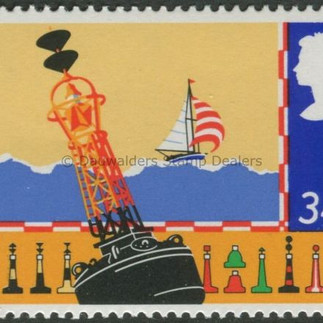A Philatelic Tour of Wales - The Coastline of Wales
- ronniesramblings
- Aug 20
- 2 min read
Updated: Sep 22
The towns of the Welsh coast rely heavily on fishing, sailing and tourism. Milford Haven has a superbly deep water harbour and as well as being a busy tanker terminal is also a major white fish port with trawlers being both built and repaired here. Abersoch is perhaps the most famous of the sailing harbours.
The Welsh coast line protects shipping with eighteen lighthouses, these include Nash Point, Point Lynas and St. Anns Head, which can all be visited. There are several lifeboat stations around the coast, the most important at St. Davids, The Mumbles, Moelfre and Rhyl, whilst there has been a lifeboat station at Swansea for over 160 years. The coastguards co-ordinate all search and rescue operations at sea.
The Menai Suspension bridge was built by Thomas Telford between 1819-26, before its construction the only way across the Straight was by ferry. Cattle being sent to market from Anglesey to the mainland had to swim across! The bridge was reconstructed between 1938-41, when it was widened and strengthened. This stamp is Britain’s first bilingual stamp. The Holyhead/London Mail Coach would have crossed Telford’s original 16 chain bridge with mail for Ireland, Holyhead being a seaport for ferries to Dun Laoghaire.

The Physical Science Building at Aberystwyth was built in 1962 on part of the land donated by Lord Rendel for the New Campus on Penglais Hill, the University was founded in 1872. Aberystwyth itself is at the mouth of the river Ystwyth in Cardigan Bay and apart from the University is chiefly a holiday resort.

Harlech Castle was completed in 1289 on a site chosen by Edward I for one of his many defensive castles. It might seem like and odd place to build a fortress, it stands 200 feet above the marshes which boarded the estuary, which is now some two and a half miles north of the castle, also the sea has retreated about half a mile across the marshes. The castle withstood a siege in 1294 but was taken in 1404 by Owain Glyndwr but retaken in 1408. During the Civil War Col. William Owen held out at Harlech for Charles I, it was the last Welsh fortress to fall to the Parliamentary forces, when Gen. Mytton took it in 1647. Unfortunately, by the sixteenth century it had become a ruin.

The Welsh stucco town house, typical of many houses in Wales, is one found in Aberaeron, which is impossible to tell – every other house being painted blue and white! Aberaeron is a popular holiday village on Cardigan Bay. Stackpole Head is owned by the National Trust and includes two beaches and eight miles of cliffs.










Comments